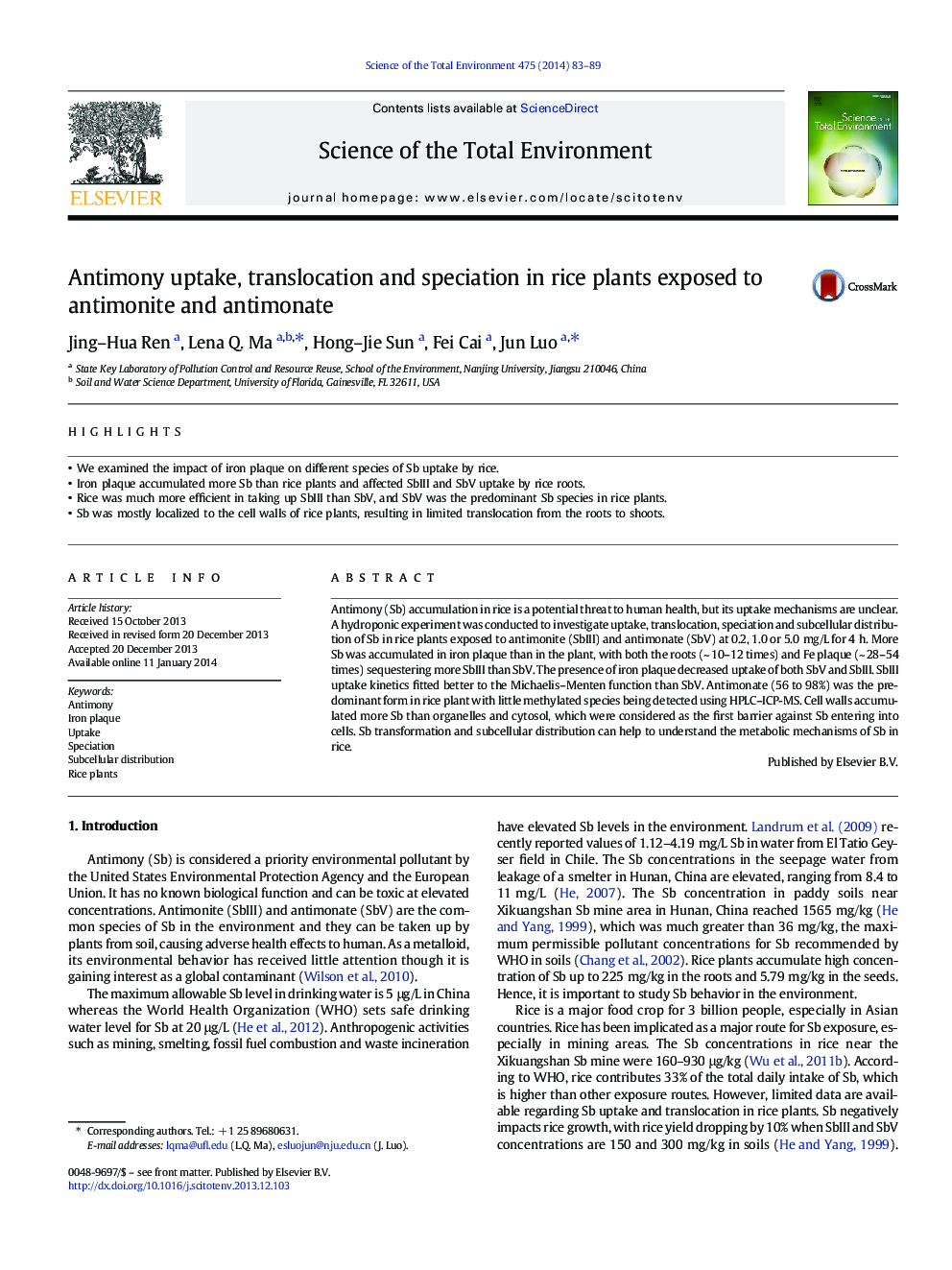| Article ID | Journal | Published Year | Pages | File Type |
|---|---|---|---|---|
| 6331544 | Science of The Total Environment | 2014 | 7 Pages |
Abstract
Antimony (Sb) accumulation in rice is a potential threat to human health, but its uptake mechanisms are unclear. A hydroponic experiment was conducted to investigate uptake, translocation, speciation and subcellular distribution of Sb in rice plants exposed to antimonite (SbIII) and antimonate (SbV) at 0.2, 1.0 or 5.0Â mg/L for 4Â h. More Sb was accumulated in iron plaque than in the plant, with both the roots (~Â 10-12 times) and Fe plaque (~Â 28-54 times) sequestering more SbIII than SbV. The presence of iron plaque decreased uptake of both SbV and SbIII. SbIII uptake kinetics fitted better to the Michaelis-Menten function than SbV. Antimonate (56 to 98%) was the predominant form in rice plant with little methylated species being detected using HPLC-ICP-MS. Cell walls accumulated more Sb than organelles and cytosol, which were considered as the first barrier against Sb entering into cells. Sb transformation and subcellular distribution can help to understand the metabolic mechanisms of Sb in rice.
Related Topics
Life Sciences
Environmental Science
Environmental Chemistry
Authors
Jing-Hua Ren, Lena Q. Ma, Hong-Jie Sun, Fei Cai, Jun Luo,
